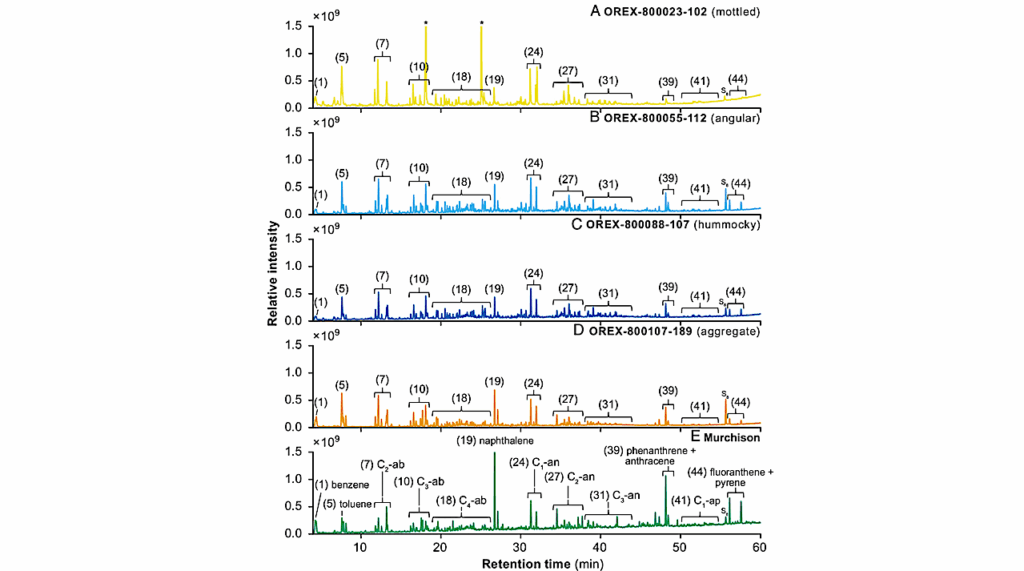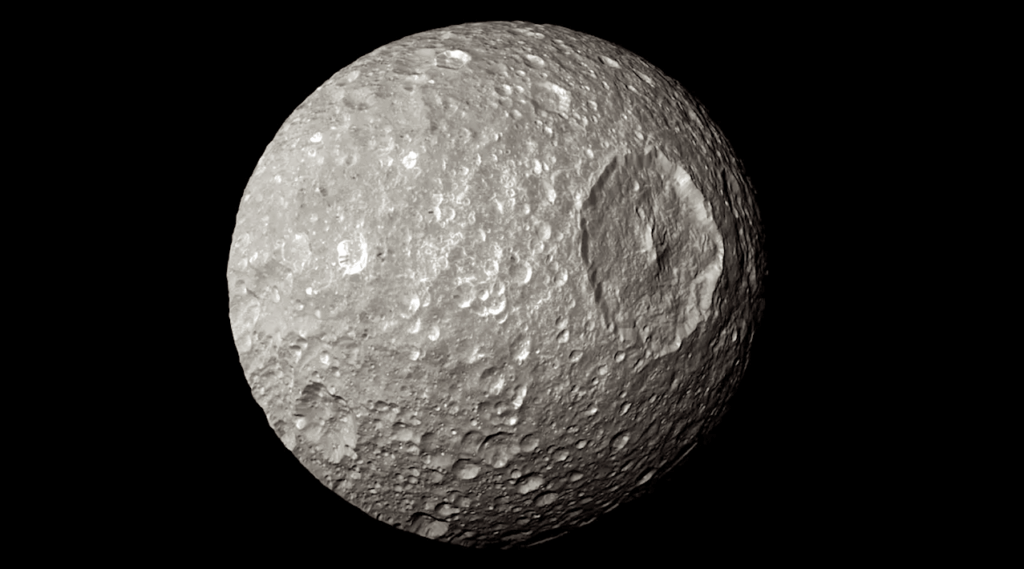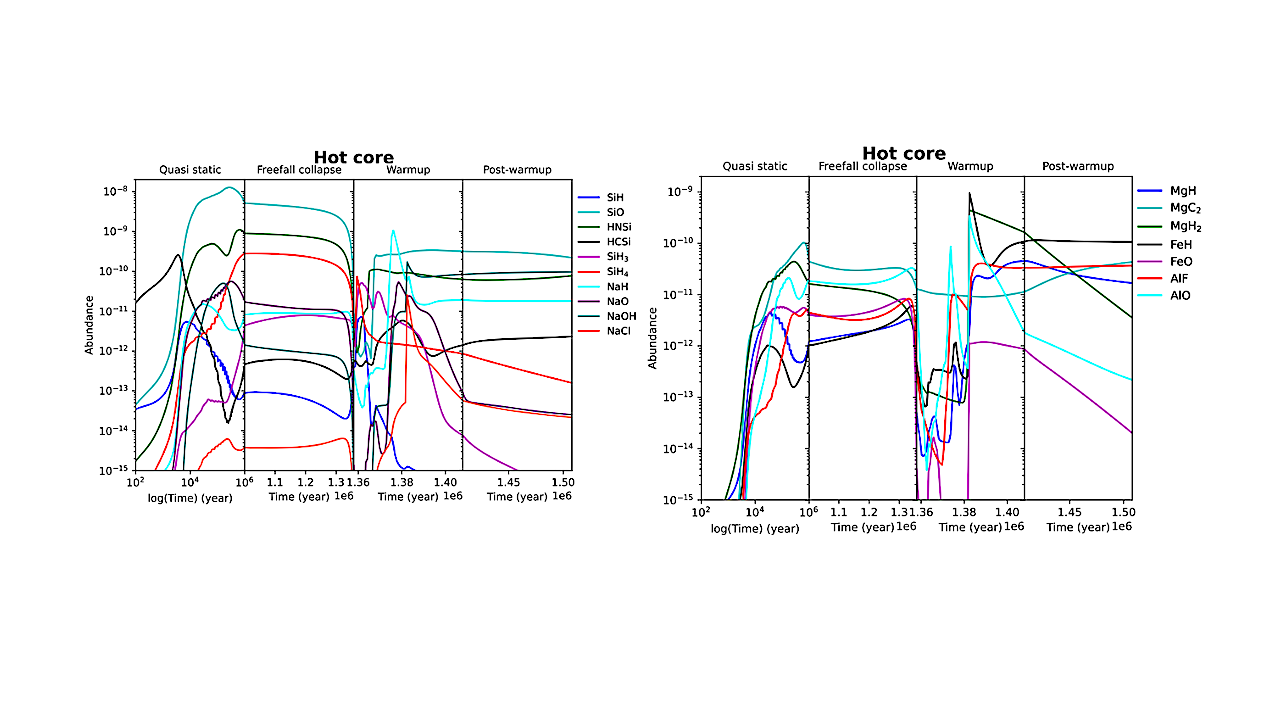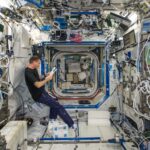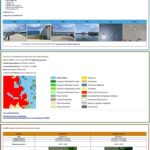Now Reading: A 3D Model Simulation Of Hydrogen Chloride Photochemistry On Mars: Comparison With Satellite Data
-
01
A 3D Model Simulation Of Hydrogen Chloride Photochemistry On Mars: Comparison With Satellite Data
A 3D Model Simulation Of Hydrogen Chloride Photochemistry On Mars: Comparison With Satellite Data
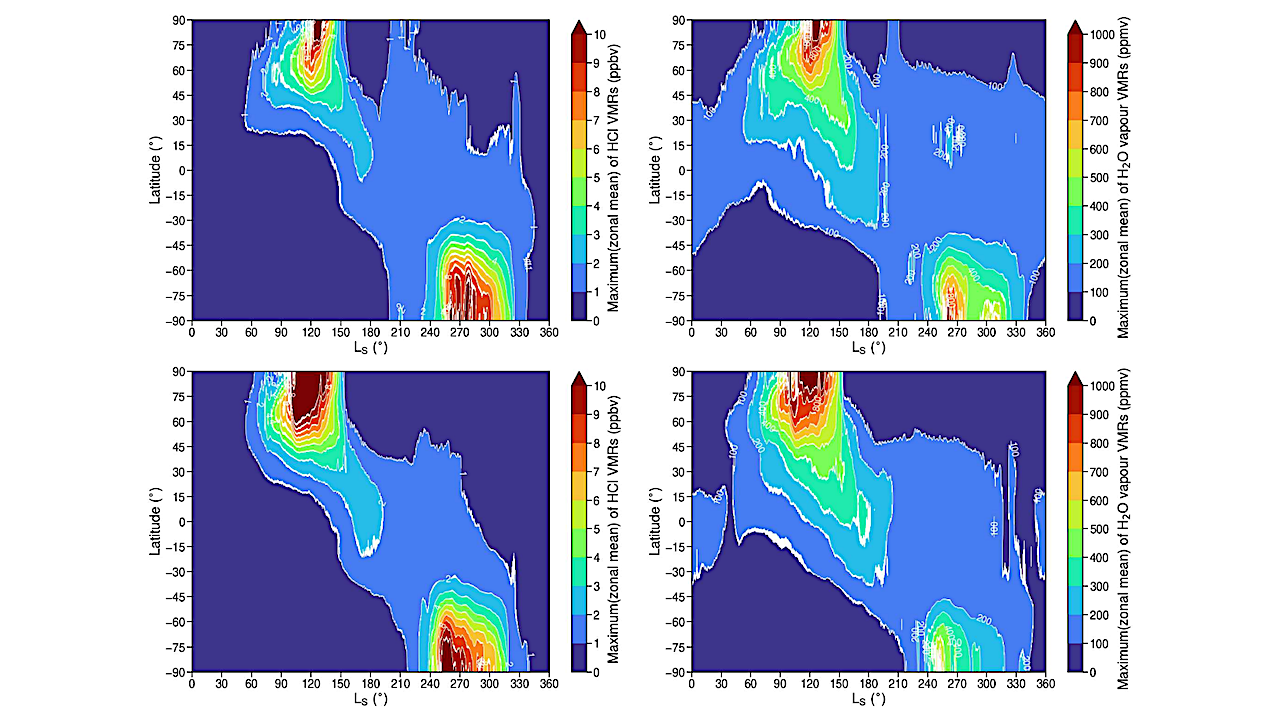

HCl was detected in the Martian atmosphere by the NOMAD and ACS spectrometers aboard the ExoMars TGO. Photochemical models show that using gas-phase chemistry alone is insufficient to reproduce these data.
Recent work has developed a heterogeneous chemical network within a 1D photochemistry model, guided by the seasonal variability in HCl. The aim of this work is to show that incorporating heterogeneous chlorine chemistry into a global 3D model of Martian photochemistry with conventional gas-phase chemistry can reproduce spatial and temporal changes in hydrogen chloride on Mars. We incorporated this heterogeneous chlorine scheme into the MPCM to model chlorine photochemistry during MYs 34 and 35.
These two years provide contrasting dust scenarios, with MY 34 featuring a global dust storm. We also examined correlations in the model results between HCl and other key atmospheric quantities, as well as production and loss processes, to understand the impact of different factors driving changes in HCl.
We find that this 3D model of Martian is consistent with the changes in HCl observed by ACS in MY 34 and MY 35, including detections and 70% of non-detections. For the remaining 30%, model HCl is higher than the ACS detection limit due to biases associated with water vapour, dust, or water ice content at these locations.
As with previous 1D model calculations, we find that heterogeneous chemistry is required to describe the loss of HCl, resulting in a lifetime of a few sols that is consistent with the observed seasonal variation in HCl.
As a result of this proposed chemistry, modelled HCl is correlated with water vapour, airborne dust, and temperature, and anticorrelated with water ice. Our work shows that this chemical scheme enables the reproduction of aphelion detections in MY 35.
Benjamin Benne (1,2), Paul I. Palmer (1,2), Benjamin M. Taysum (3), Kevin S. Olsen (4,5), Franck Lefèvre (6) ((1) The University of Edinburgh, School of GeoSciences, UK, (2) Centre for Exoplanet Science, University of Edinburgh, UK, (3) DLR, Germany, (4) Department of Physics, University of Oxford, UK, (5) School of Physical Sciences, The Open University, UK, (6) LATMOS, France)
Subjects: Earth and Planetary Astrophysics (astro-ph.EP); Chemical Physics (physics.chem-ph)
Cite as: arXiv:2506.18757 [astro-ph.EP] (or arXiv:2506.18757v1 [astro-ph.EP] for this version)
https://doi.org/10.48550/arXiv.2506.18757
Focus to learn more
Related DOI:
https://doi.org/10.1051/0004-6361/202553872
Focus to learn more
Submission history
From: Benjamin Benne
[v1] Mon, 23 Jun 2025 15:28:45 UTC (2,899 KB)
https://arxiv.org/abs/2506.18757
Astrobiology
Stay Informed With the Latest & Most Important News
Previous Post
Next Post
-
 012024 in Review: Highlights from NASA in Silicon Valley
012024 in Review: Highlights from NASA in Silicon Valley -
 02Panasonic Leica Summilux DG 15mm f/1.7 ASPH review
02Panasonic Leica Summilux DG 15mm f/1.7 ASPH review -
 03How New NASA, India Earth Satellite NISAR Will See Earth
03How New NASA, India Earth Satellite NISAR Will See Earth -
 04And Thus Begins A New Year For Life On Earth
04And Thus Begins A New Year For Life On Earth -
 05Astronomy Activation Ambassadors: A New Era
05Astronomy Activation Ambassadors: A New Era -
06SpaceX launch surge helps set new global launch record in 2024
-
 07Space Force plans new ‘Futures Command’ amid pressure to speed up modernization
07Space Force plans new ‘Futures Command’ amid pressure to speed up modernization












